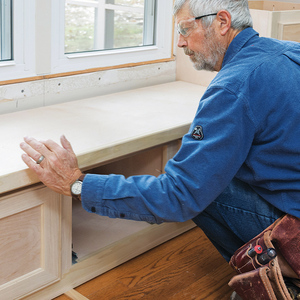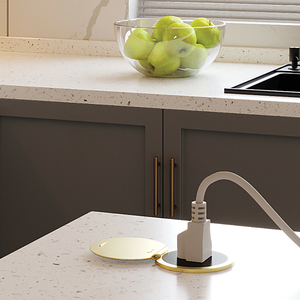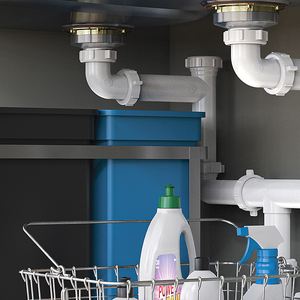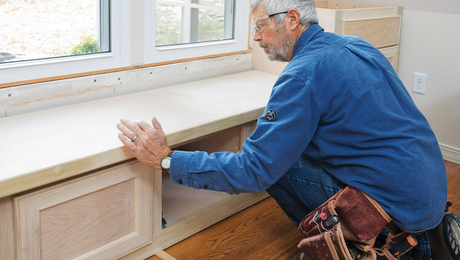An Inside Look at Kitchen Cabinets
Manufactured kitchens run the gamut on price, materials and craftsmanship.
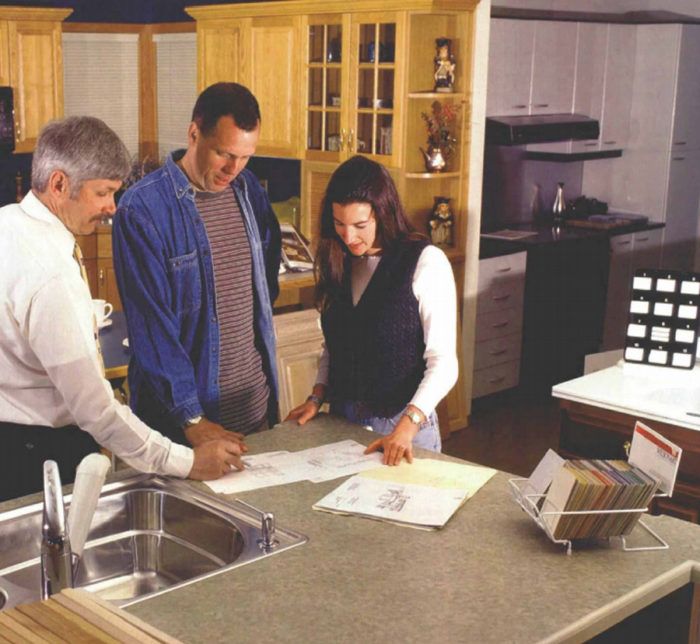
Synopsis: Factory-built kitchen cabinets are available in a range of prices and materials with varying degrees of design flexibility. This article describes the types of cabinets that are on the market, the quality and durability of materials that go into them, and how they are built. Good reading before shopping.
At the giant KraftMaid cabinet factory just outside Cleveland, workers stand by with glue guns and pneumatic nailers as parts for a complete set of kitchen cabinets approach on a conveyor. Drawers, face frames, prefinished panels, shelves and moldings arrive from all corners of the million-square-foot plant. Although the customer who ordered this kitchen may have taken months to plan its every detail, KraftMaid assemblers will put it together in 15 minutes. Cabinets are shipped about a week after the order has arrived.
Did you think your new kitchen cabinets would be hand-built by fussy artisans? Guess again. Cabinets are a $6 billion industry, and they pour off assembly lines like hubcaps or lawn chairs. If that prospect unsettles you, consider a smaller company, one like Rutt Custom Cabinetry of Goodville, Pennsylvania. Here, door panels are matched for color and figure, one board at a time. A specialist is standing by to custom-blend a paint color. The catch? Rutt charges more than twice as much, and you can count on waiting 40 or 50 days to get your order.
KraftMaid and Rutt are only two among hundreds of cabinet manufacturers. Yet they help to illustrate the many choices buyers will face before plunking down thousands of dollars for a new kitchen.
Manufactured kitchens fall into three general categories
To help make sense of what’s available, the industry has traditionally divided cabinets into three grades: stock, semi-custom and custom. The labels don’t mean as much as they once did, but they are still a good starting point.
Stock cabinets are at the low end of the market. Available in limited styles and finishes and with fewer options, stock cabinets are built in standard sizes in increments of 3 in. in width. They are manufactured and then stockpiled, without regard to who will buy them. Semi-custom cabinets are built to order, also on a 3-in. grid, and offer more choices when it comes to styles, accessories and finishes. Materials may be of higher quality. Custom cabinets, such as those from Rutt, are built to fit the available floor space exactly with just about any option the customer is willing to pay for. They are the most expensive of all.
And then there are the small shops, the local cabinetmakers found in virtually every corner of the country. Working on one job at a time, these shops turn out cabinets designed for just one client. Detailing, construction and wood selection may range from ordinary to exquisite. Yet these cabinets are not manufactured in the same sense as factory-built, mass-produced goods. Examples of that more individual work can be found throughout this issue.
Any cabinet is a sum of its parts, and the choices can seem overwhelmingly complicated. Assessing quality is not always easy. Many manufacturers submit their cabinets to the Kitchen Cabinet Manufacturers Association for voluntary testing and certification. Although the process is wide-ranging and rigorous (roughly half of those seeking certification for the first time will flunk), it’s not useful for comparing individual components such as drawers, doors and cabinet boxes. And makers of high-end cabinetry may skip the test altogether.
For more photos and details on kitchen cabinets, click the View PDF button below.
Fine Homebuilding Recommended Products
Fine Homebuilding receives a commission for items purchased through links on this site, including Amazon Associates and other affiliate advertising programs.

A House Needs to Breathe...Or Does It?: An Introduction to Building Science

Code Check 10th Edition: An Illustrated Guide to Building a Safe House

A Field Guide to American Houses


